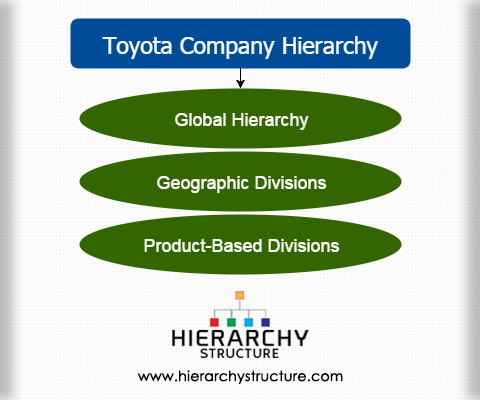The organization structure or hierarchy of Toyota Motor Corporation is based upon the numerous business operations carried out by the company all across the world. Being one of the leading automobile manufacturers in the world, the company employs a hierarchical structure which supports its business goals and strategic aims.
The success and effectiveness of the company in maintaining these functions and yet achieving goals is what makes it a company that is renowned all across the world. The company has a divisional organization structure which is strongly centralized global hierarchical in nature. To understand the company hierarchy of Toyota better, you can go through the following given information which focuses on different types of organization methods.
Global hierarchy
Toyota maintains a global hierarchy with its headquarters in Japan. The headquarters take the final decisions on all the matters and is responsible for passing on judgment and decisions on major issues. If individual business units do not communicate well with each other, then the Japan office can give the final say or verdict. Despite the reorganization in 2013, the company maintains a global hierarchy system but with the change that now its regional heads business units too have an increased say. All business units must report to global headquarters in Japan.
Geographic divisions
The company has 8 geographic divisions which are North America, Japan, East Asia, Europe, Middle east, Africa, Oceania, China, Asia, Caribbean and Latin America. Each of these regional centers and their heads must report to the headquarters. Through this system, the company can operate much better and also improve Japanese business functions, products and services in a flexible way. Each of the divisions has a division head who takes the last decision for that particular branch. But the ultimate decision still lies with the company’s headquarters in Japan.
Product-based divisions
Another feature of Toyota’s company hierarchy is the set of product based divisions. The company consists of 4 of these divisions and they are Lexus international, Toyota no. 1 for operations in North America, Japan and Europe, Toyota’s no. 2 for operations in all other regions and the Unit center. The unit center is responsible for transmission, engine and other related operations.
This is one feature of the organization structure of Toyota which supports development of product lines and brands. This division also makes way for smoother operations, divided decision making per branch and ability to resolve issues fast.

